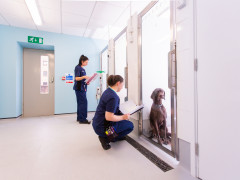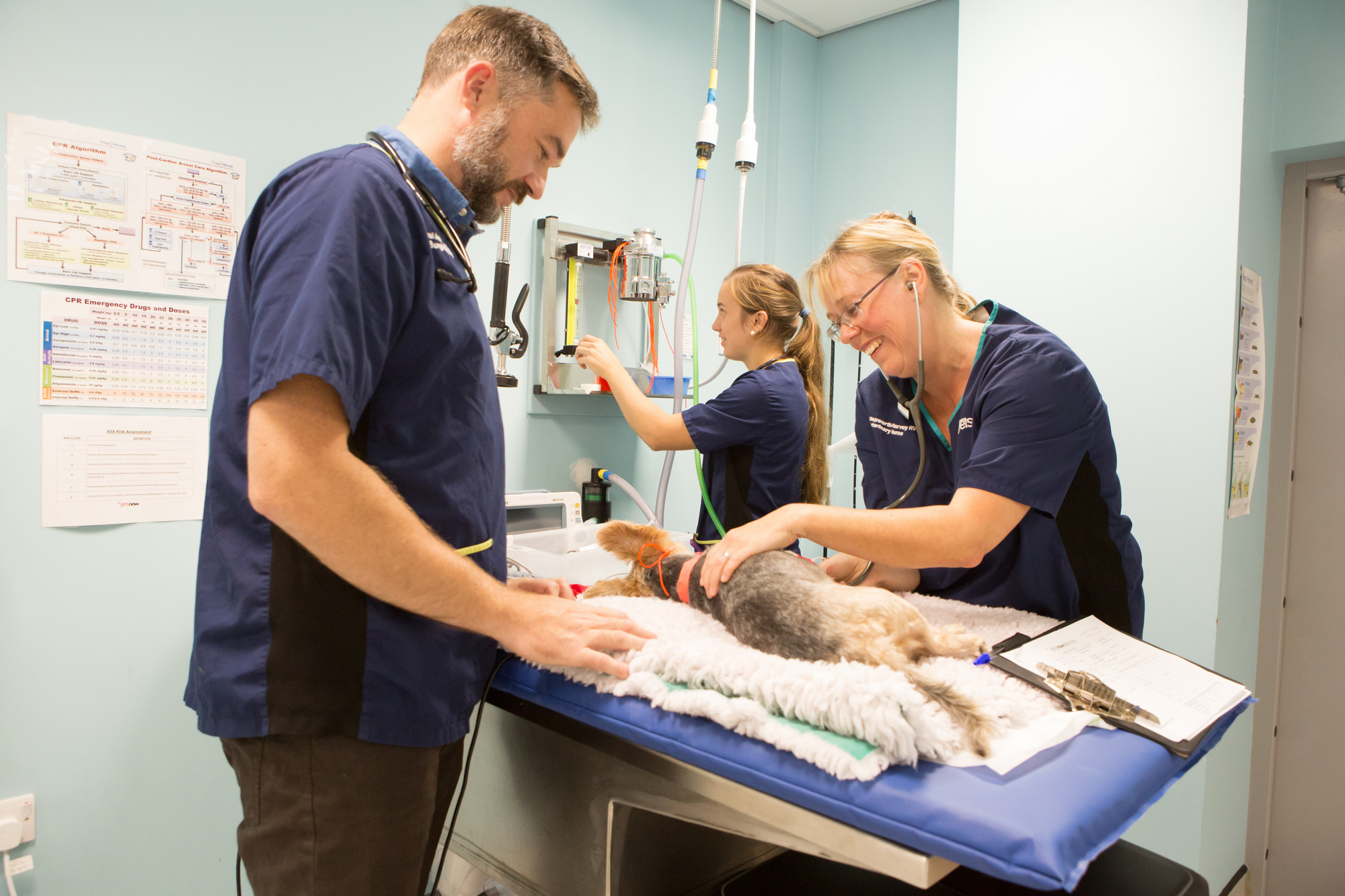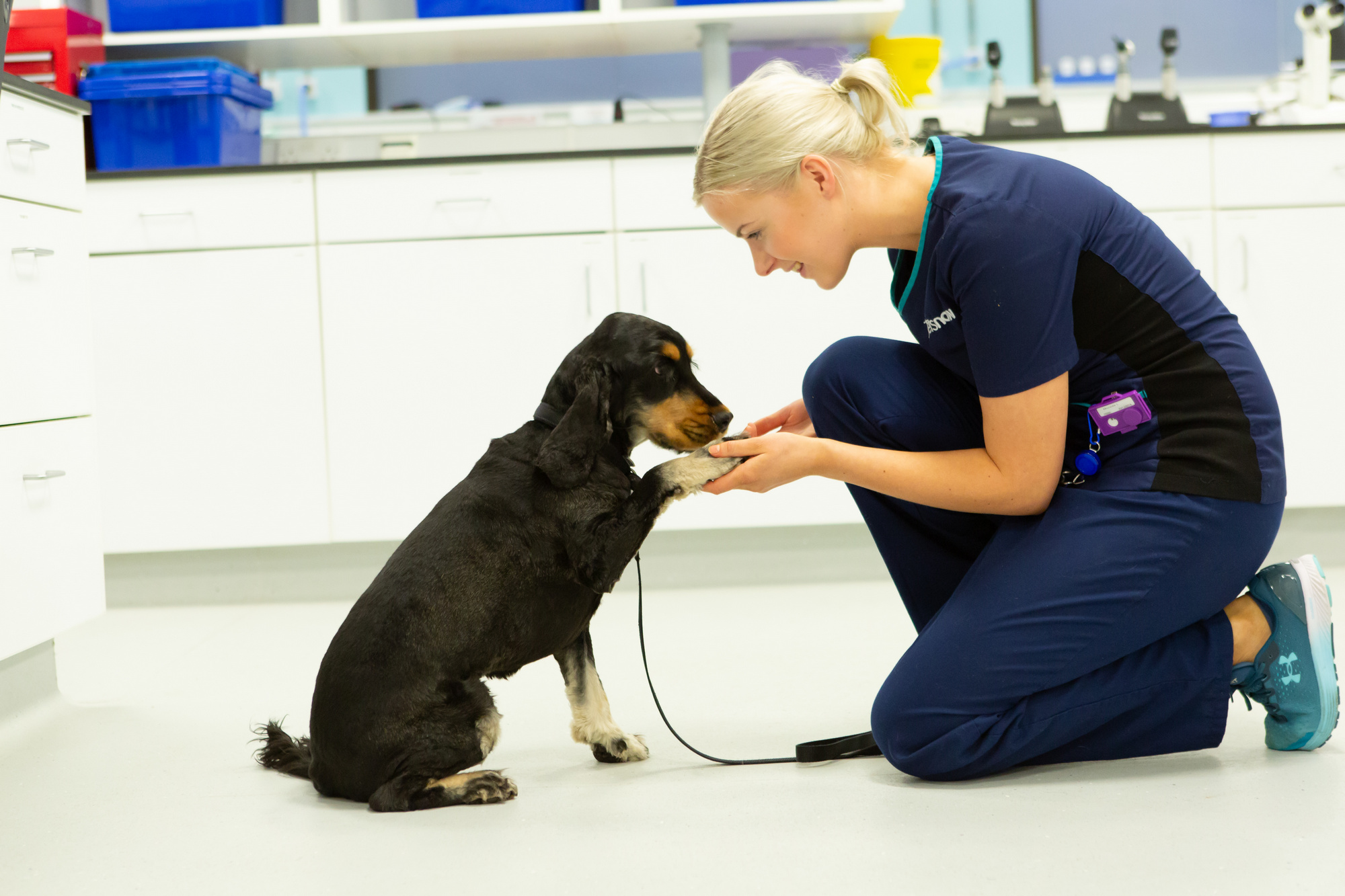Vets Now nurses share their tricks for making life easier on the front line
Working on the front line, our vet nurses regularly pick up pearls of wisdom which help them provide the highest standard of care in the most demanding of circumstances.
So, to mark Vet Nurse Awareness Month, we asked them to share their most tried and tested tips for helping their patients and making the lives of their colleagues easier.
1. Hairbands at the ready
I always have a spare hairband on me for keeping fluffy ears out of vomit. It makes the situation much cleaner and easier to handle – Misha Holmes, Worcester
2. Litter tray trick
Place a rubbish bag in a deep-filled litter tray. When dogs are sick aim them into the litter tray. Once finished you can tie up and discard. This saves chasing the sick across the floor as it smears – Kelly-Marie Barnard, Colchester
3. Keep it clean
If a dog has diarrhoea, bandage their tail to keep it clean – Louise Stott, Witham

Interested in a career in veterinary nursing?
Find out about our vet nursing opportunities here
Find out more4. Leak-proofing
Place the urinary collection bag in a litter tray lined with an inco sheet, this way if the bag leaks and you need to measure the cat’s urine you can weigh the inco sheet and work it out that way. Also great as it keeps it all clean and tidy too – Carly Bennett, Bristol
5. Collection bag placement
We sit our collection bags in an autoclave pouch (the ones for sterilising instruments). It’s really handy for higher up kennels as you can hook the pouch onto the bottom of the door of the kennel below, reducing the risk of pulling on the catheter – Fiona Shuttleworth, Glasgow
6. Tail trick
I’ve recently learned that for cats with indwelling urinary catheters and closed systems, you can cut the end off of a 3-5ml syringe tube and tape it to the cat’s tail then thread the line through the tube. This keeps it up and attached to the patient but allows the line to move a little and reduces painful pulling on the prepuce – Gisele Gomes Rodrigues, High Wycombe
7. A handy alternative
Use a glove to separate drip lines from extension sets if it’s proving a bit stiff and you don’t have forceps to hand – Elaina Mirams, Macclesfield

8. Cleaning dry blood
I’ve always found if there is any dry blood on a patient from where the IV has been vet wrap works a treat. Wiping the dry blood with the vet wrap removes it better than wet cotton wool that just spreads the blood – Lauren Mcleary, Stoke
9. Small animal heartbeats
On small animal GAs I love to place a Doppler over the heart to hear the heartbeat consistently. I always tend to be cautious of rabbit/guinea pig/degu anaesthetics and find when I need to assist the vet with opening packing etc. I’m reassured by consistently hearing the heart on the Doppler – Kelly-Marie Barnard, Colchester
10. Kennel liners/eco pads as litter trays
A tip I got from our host practice is to use kennel liners/eco pads as litter trays for recumbent cats or those with pelvic injuries, so they’re flat – Cathy Rose, Bournemouth
11. Using an insulin syringe to blood sample
One I picked up in day practice is to use an insulin syringe to blood sample hypoglycaemic patients. Using a very small needle and taking a jugular or cephalic sample seems to be a lot better tolerated than jabbing the ear or pad – Samantha Abbott, Warrington

12. DIY hay rack
I read a great tip for feeding hay to bunnies using basket muzzles stuffed with hay and tied to the kennel. Like a hay rack – Cathy Rose, Bournemouth
13. Labelling plugs
Our host practice has recently labelled the plugs on things like the clippers which I’ve found really helpful, especially when there are quite a few things in use – Samantha Abbott, Warrington
14. Feeding small furries
I picked up a fab little trick for syringe feeding small furries from my old exotics practice. Instead of using the big chunky recovery syringes, you can use nail clippers to take off the end of a 1ml syringe and use this to feed the small furry. It’s easier as it’s a much more controlled way of feeding them and I usually find there is less wastage. Also, it seems to be more tolerated – Alana Taylor, Lincoln

15. Microchip tip
Does anyone else get annoyed when calling microchip companies, only to be told the chip does not belong to them and that you need to call another company for the details?
At a recent congress I found out about this website:
https://www.check-a-chip.co.uk
Just punch in the chip number and it will give you the correct company number to call – Tanya Burrough, Reading
16. Keeping puppies warm
I’ve found tumble drying the towels and bedding just before they are used helps keep puppies warm. We don’t have an incubator so I’ve put towels around the outside of a wire carrier and put the bair hugger hose over the top into it covered by more towels and a room thermometer to monitor the temperature – Robyn Deus, Gateshead
17. Socks for warmth
Our host practice has a large supply of various-sized knitted socks for patients during GA, so they wrap their feet in bubble wrap and put the socks on to keep them warm for surgery – Julie Collins, Eastbourne
18. Using surgifix to hold soffbann
I like to use surgifix to hold soffban in place on neck dressings for central lines and O Tubes, it keeps the soffban in place without any constriction around the neck – Sarah Hanvey, Manchester
